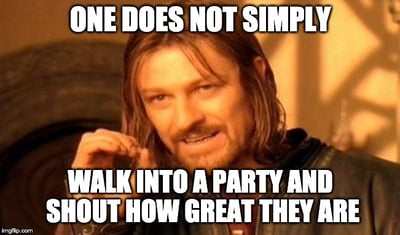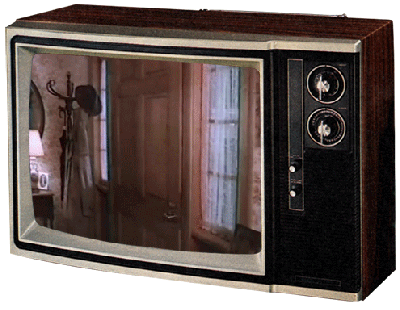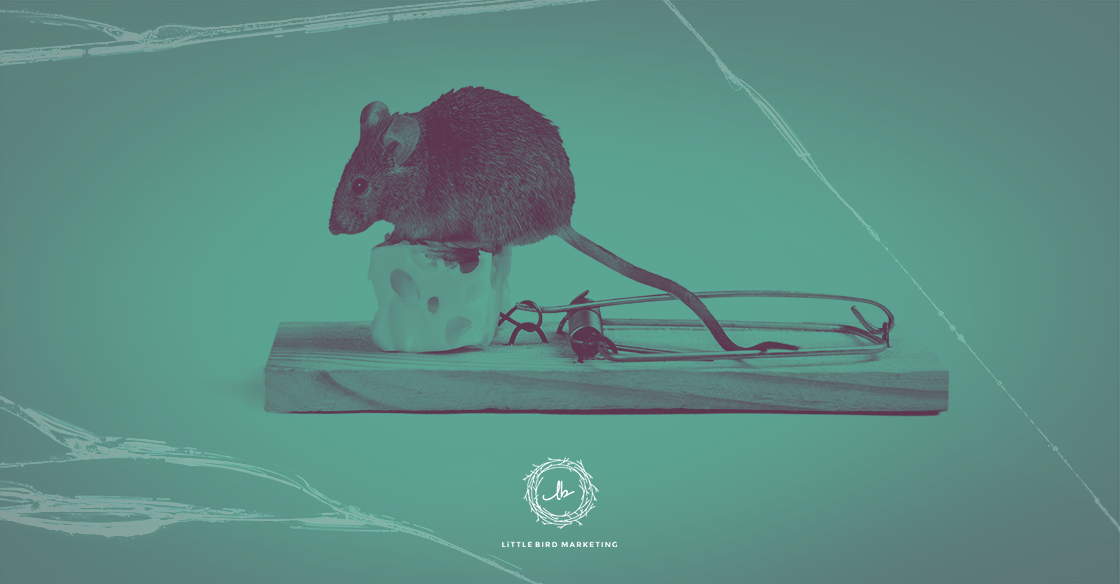I'm a busy CEO. Chances are you are a busy (insert your title here). I was recently taking Q&A from an audience and someone came right out and asked, "How much of your content do you create yourself?" I dug in a bit to his question before answering and tapped into the underlying frustration from whence this question was born.
As the owner, he too wanted social posts scheduled that were deeply meaningful... But oh, did I mention, "done?" He wanted to follow my principles about developing the perfect buyer persona and then creating content based on their emerging or persisting problems. He struggled because he wanted to spend the time and have them written well, but also needed to be an active and selling President. Anyone stressed out yet?
He wasn't super pleased when I mentioned that the biggest reason I'm not stressed and able to take speaking gigs is because many years ago, I developed a sustainable system. The fruit of that system is at the point in time that he was posing this question, we already had written 32 of our 36 blogs for the year. Additionally, our automated marketing dashboard had well over 500 social media posts already scheduled. That didn't take into account how many had already posted for the year.
At first, you'd think this is just the effective use of a content calendar, but the problem isn't scheduling. The issue is completing them with the right balance of quality and, simply what the banner says in my office, "Get Shit Done."
To say it a little more simply, I could write 200 social media posts today and they would be done. But would they be any good? Writing something that is truly amazing is great, but if it never gets posted, what's the use?
Before I say more, first of all, don't hate me because I have a terrific team. Secondly, don't hate me because I took the time to take this carefully curated team of content marketing experts and indoctrinate them into a system. The system I created rests on this principle: "DON'T PUT PRESSURE ON PEOPLE; PUT PRESSURE ON SYSTEMS." Obviously, I believe you must have a system.
 Click the download button above to print out this banner.
Click the download button above to print out this banner.
Here are some of my thoughts about what should drive the system you create to help you strike that right balance when writing social media or blogging content. Take these tips to heart when you develop a content marketing system that can handle the stress and not spill out on people.
My Thoughts on Strategy
If you know me at all, you know my first line of this paragraph is going to belabor the need to create legitimate ideal client personas. You simply can't start to create a successful strategy, write a blog or craft a social media post without being clear about the intended audience. If you don't have time to craft a buyer persona, I would argue you don't have time to create content. Don't skip this step.
Once you do know your audience, it can still be hard to think strategically about the balance between slaving for a week on a blog or perseverating on a Tweet. I give you the Rule of 15 to help you see that not all content is equal. While all should be written based on the interests and perspectives of your target market, some should be more simple to write. The RULE OF 15 simply means that for every 15 pieces of content the breakdown should look like this:
- 10 that are interesting
- 4 that are helpful
- 1 that asks for the sale
We often spend too much time on content - trying to pick the right word to use when we haven't struck the right balance on the TYPE of content we should be creating. I often talk about this rule as my Cocktail Party Rule.

Well, if they do they are quickly ignored or actively avoided. The same is true for content. If we show up online and do nothing but talk about our company, our sales or our own systems and perspectives before we have earned the right to share, we've made it all too easy to turn the digital channel.
However, if we carefully sprinkle in some interesting conversation that shows our audience we know a thing or two - then use that knowledge to help them, we earn the right to be heard when we do want to talk about ourselves. It truly is that simple - but it needs to be baked into the content strategy in a quantifiable way.
My Thoughts on Organization
The breakdown of the strategy has to be organized. If your goal is 600 social posts in the year, you now know you need:
- 400 that are interesting
- 160 that are helpful and
- 40 that ask for the sale
Organization is best created for content with batch processing in mind. That means if I'm going to source 400 interesting things to share, it would be a much better use of time to find 20 of those at a time. It would also be better if I didn't find one, add a hashtag strategy, get the graphic done and then post it. Those tasks should also be batched. The 30-minute increments should be broken down like this:
- 30 minutes to find the 20 interesting articles to share
- 30 minutes to develop the overarching hashtag strategy
- 30 minutes to check graphics or explain to a designer what is needed
- 30 minutes posting
Most people ignore this method or try to implement it without the seriousness of execution. Batch processing works when you train your brain to focus on a particular task within a particular time span. This training doesn't happen without a timer. Seriously. Set a literal timer. That $1000 phone you have? It's a timer. Easy.
This simple trick is overlooked, but is the difference between getting a lot done in an organized way. When people fail to set a timer, what I find, is that they start doing the organizational task and then go back into strategy mode again - perseverating about the nature of the content. If these are done in the right order, this part of the process should be fairly brainless in that the strategy time already did the hard work.
My Thoughts on Accountability
It is too easy to walk away from the intensity of strategy sessions and then switch gears into creating content. Even coming right out of a strategy session, we can be filled with dread at what has been left undone at our desks - thinking it's best to get it done in the way we know how. This often leads to people going back to creating content outside the strategy and without organization. We trudge back to our desks and fall right back into old patterns.

We don't want monotony, so we create a new idea. It's awesome to have a creative team generating great ideas. I always entertain crazy ideas. But, in the end, we ask ourselves two things:
- How does this fit into our strategy?
- Can this crazy idea be organized?
If you sell widgets, can you incorporate a crazy idea you just had about rainbows? At first glance, accountability might have you say a resounding "no," but if you can answer these two questions effectively perhaps rainbows are just the thing your content needs.
We're a marketing company, but we've talked about self-help, wigs, market research, ethnographic studies, search engine optimization and my love of autoharps. The thing is, we've figured out how these ideas fit into our strategy and have been able to organize the micro-actions needed to get them done properly. We've found a place for them inside our system and we know their purpose - so we've spent the company time and resources accordingly. Accountability doesn't mean you can't do ANYTHING new. It just means that when the new idea crops up, it must be tested and integrated into the system.
Once you have this mindset accountability becomes more of a check on mission creep. Let me explain it this way. Your strategy time informed you of what to write about. The organization phase helped you schedule it and break it down into easily digestible pieces. The accountability phase then might simply be a governor placing a limit to adding new things to the list before the first ones are done. It's not to say that new and inspired ideas can't be entertained. It's to say that those ideas can't go rogue. They have to fit into the system.
My Thoughts on Repeatability
People come to us because in some way they are stuck. Some are stuck at the beginning of the process, some at the middle and some at the end. There's an important difference. I find many marketing executives overly focused on metrics when they haven't strategized, organized or held any of their content accountable to those decisions. Or, they have strategized, but then everyone on the team went a different direction regardless of the strategy because it simply wasn't baked into the content creation system. I find many executives talking to me about KPIs (key performance indicators) or other metrics about their content, when frankly, any measurement of poor work is totally meaningless. Yes, it's a number, but what could it possibly mean? If you don't know what it means, why should we repeat it?
Great conversations about repeatability are not reliant on KPIs, but require a more in-depth conversation to understand those metrics. This requires solid reporting and strategy meetings at least quarterly.
As the CEO of Little Bird Marketing, I am also treated like one of our clients. What I mean by that is my team books quarterly reporting meetings and content strategy sessions with me just like they would with a client. Sometimes we don't like our own medicine. But, the last step in our methodology is about digging in and finding out what worked. Our ethos is don't repeat what isn't working no matter how you feel about it; double down on what your most ideal client is showing signs of enjoying.
It can be shocking to discover a guest blogger outperformed my own content for the quarter. Yeah, that happens. It can be unnerving to read a blog ghost written by my staff and realize they did a better job at it than I would have. Yeah, that happens. It can also be a good reminder that when I get either a little more vulnerable or a little more basic, the piece is much better received. Now THAT happens all the time. The most important key to repetition that works is operating from the truth.
You have to double down on what works to grow your audience and serve your most ideal client.
In short, find content you most coveted audience will find relevant, figure out how to get that out the door in a timely and consistent manner, stay focused on the goal to avoid content black holes and only repeat what worked. That’s your content marketing plan sorted.







Let Us Know What You Thought about this Post.
Put your Comment Below.